
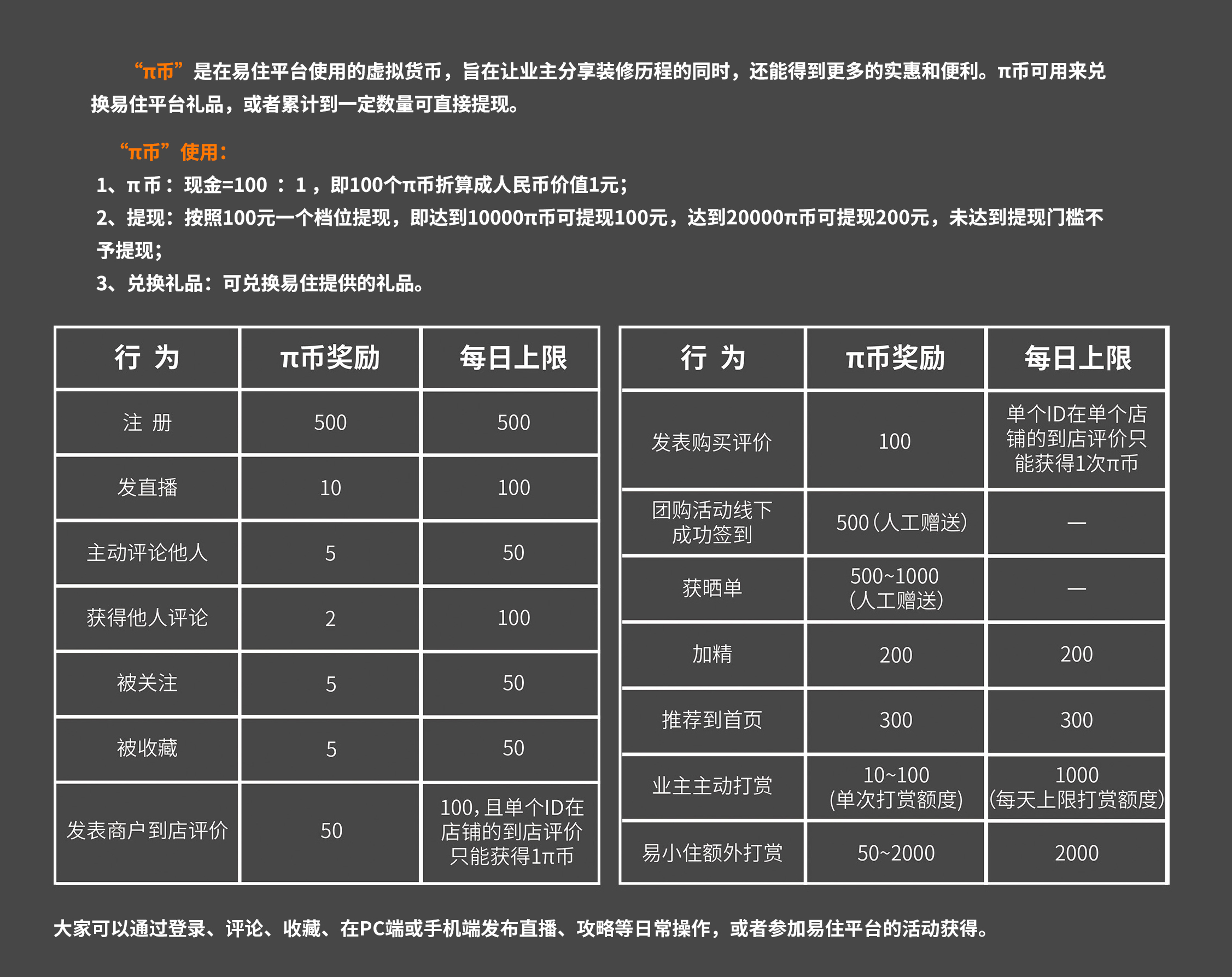
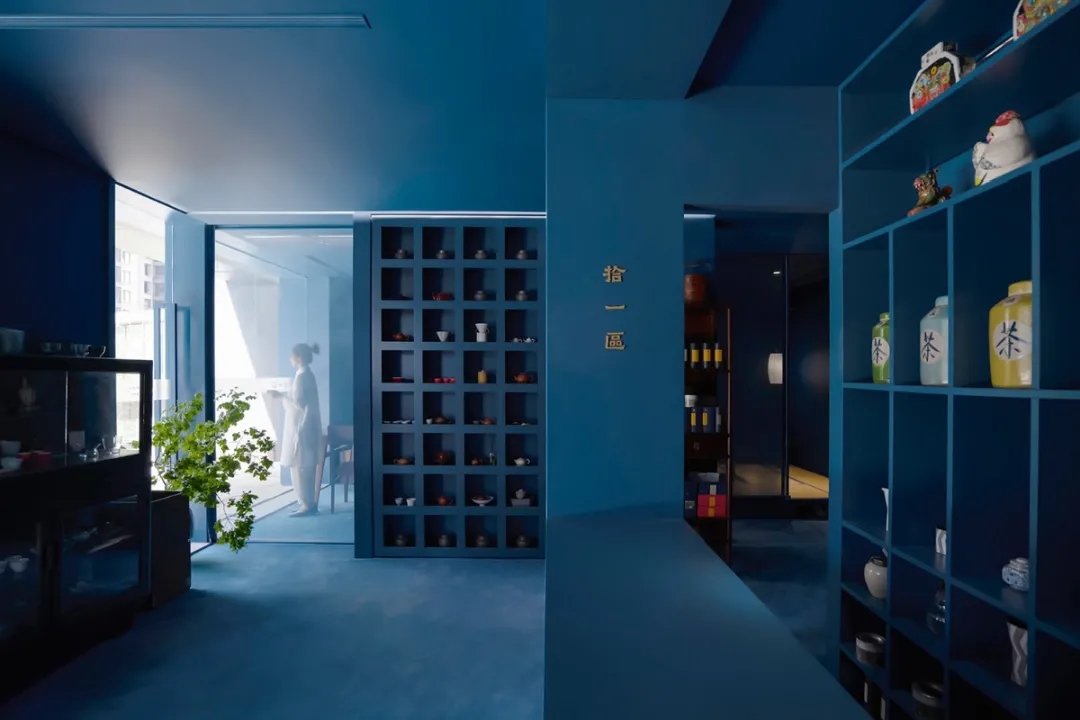
去年是“拾一區—茶书房”成立的第五个年头,据说他们有着全北京最好的岩茶,同时还提供与茶相关的其他服务:艺术课程、插花、茶礼、茶器等。
Last year was the fifth year when Ten plus Terrace was established. It is said that they have the best rock tea all over Beijing and they can provide the other relevant services besides tea, such as art courses, flower arrangement, tea ceremony, tea utensils and etc.
今年他们想做一个不同的茶室作为新店,以区别于老店。这样就需要思考一个问题:我们应该怎样重新理解“茶室”?
In September, they want to make a different tearoom as the new store to separate it from present store. Therefore, there is a question to be thought about that is how we should understand tearoom once again?
思考从“水”出发,没有水就没有“茶”,也许可以把整个茶室都泡在水里,就像在深海中,深蓝色便成为了空间的主基调。
The thinking is started from “water”. Without water, there is no tea. The whole tearoom maybe dips in the water like in the deep sea. So that dark blue can also be the main tone in the space.
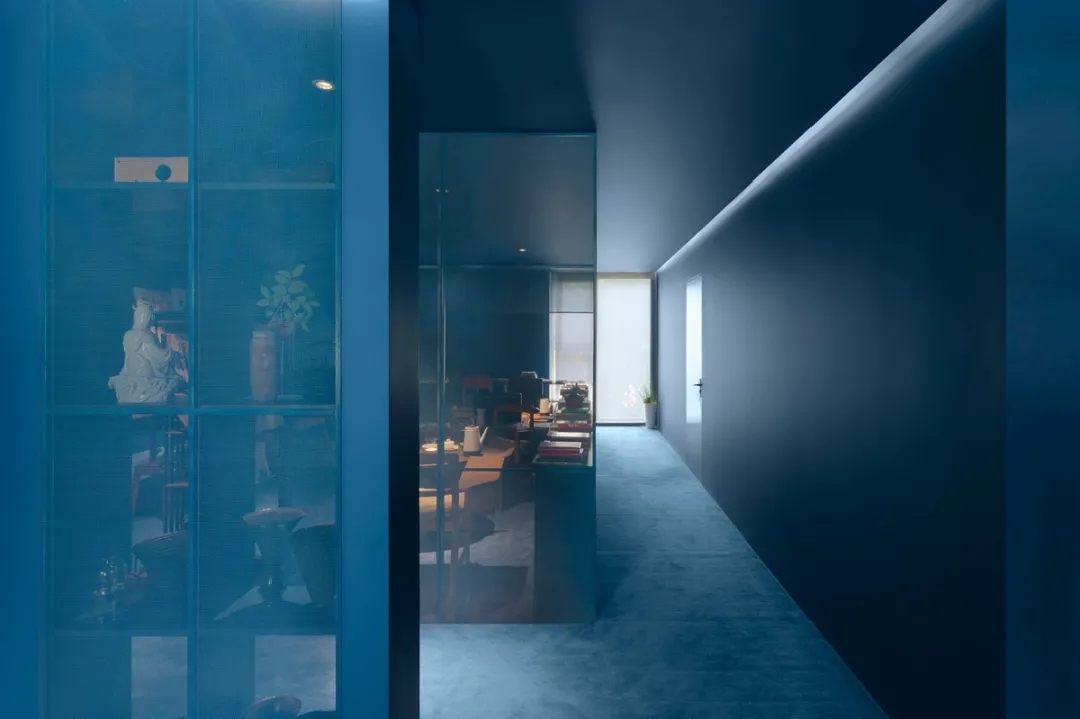
两重屏障,走廊和阅读大厅。
Two layers of barriers, the corridor and reading hall.
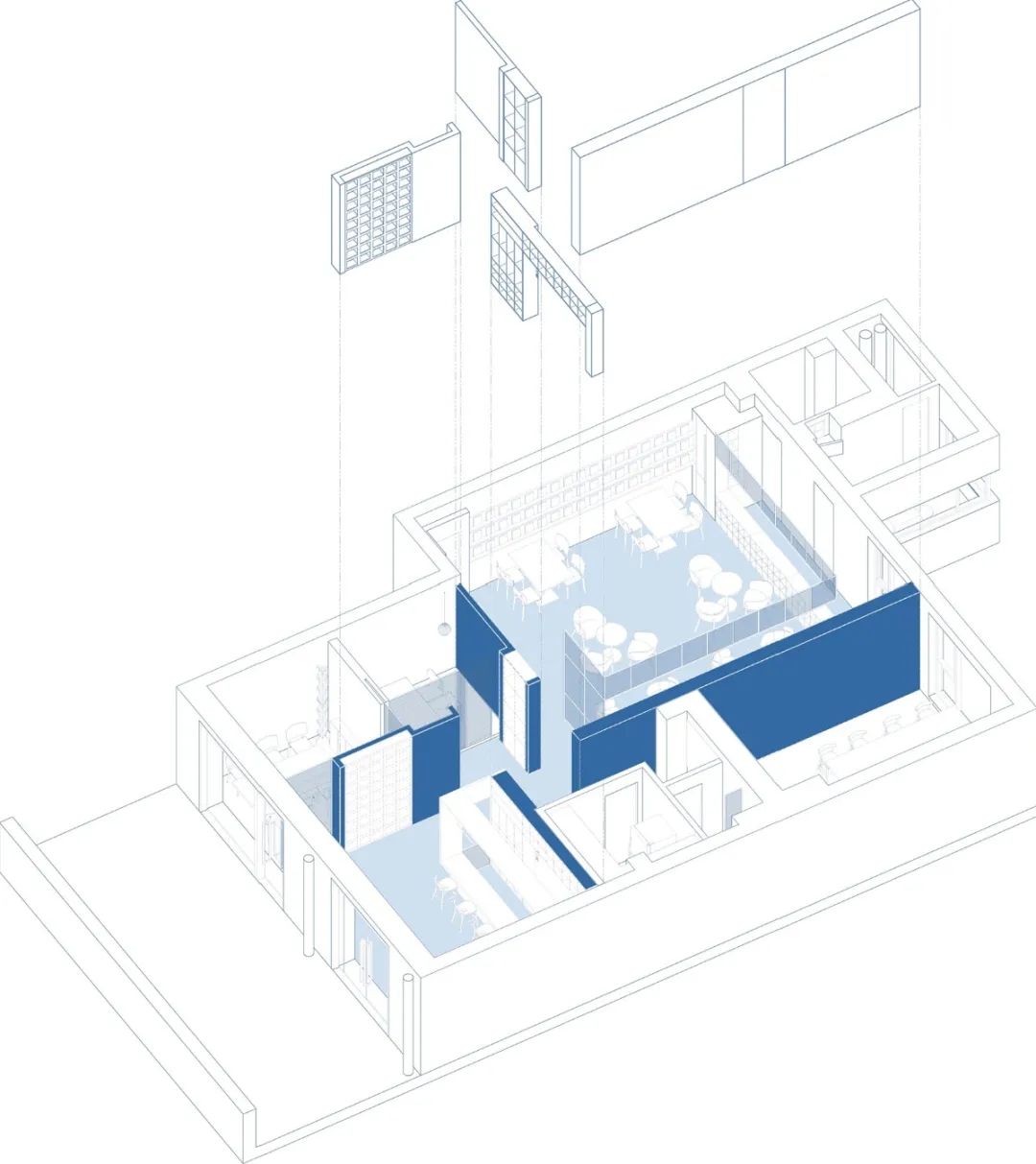
轴测图 axonometric drawing
在这样的空间格局之下,前台的重要性也被剥夺,仅成为空间组成的一部分。
Based on such space arrangement, the importance of the reception is denied and it becomes just a part of the space.
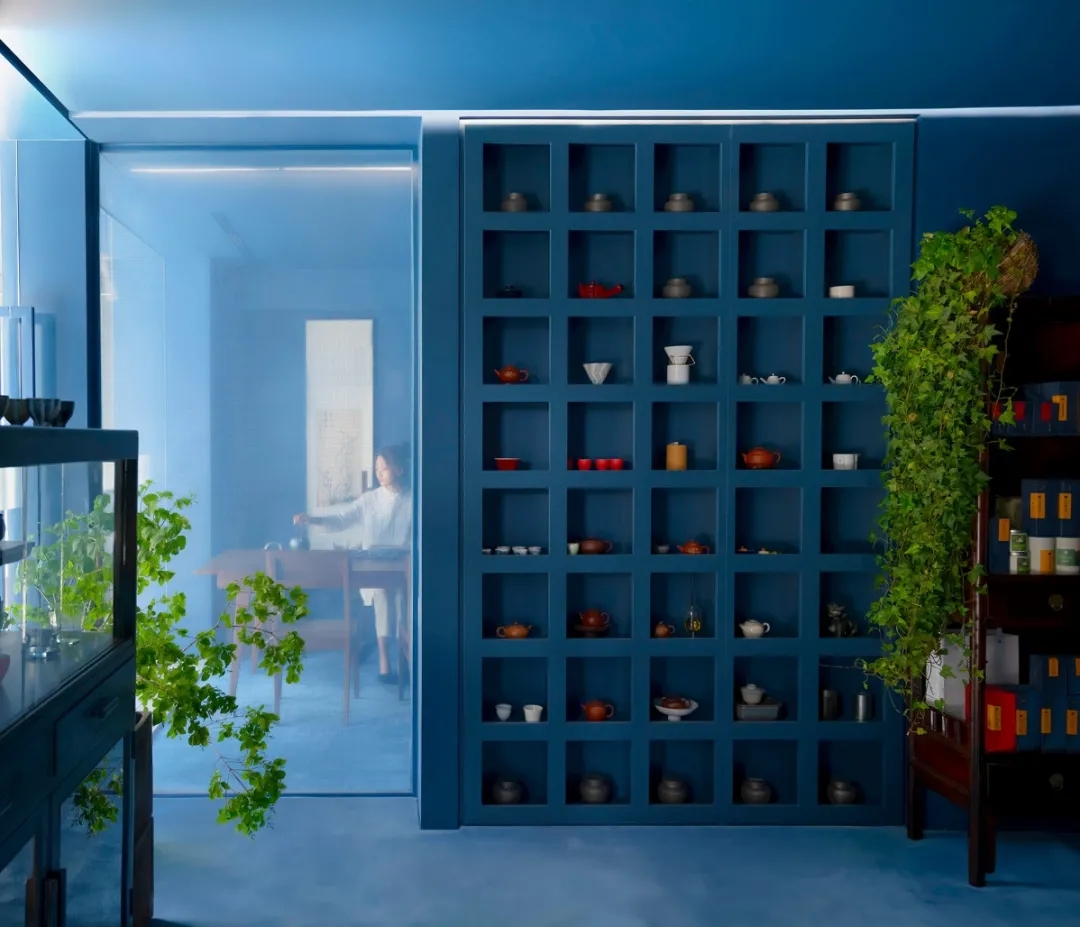
包间的印花玻璃,成为前厅的取景框。
Print glass of the compartments has become the photo frame of the lobby.
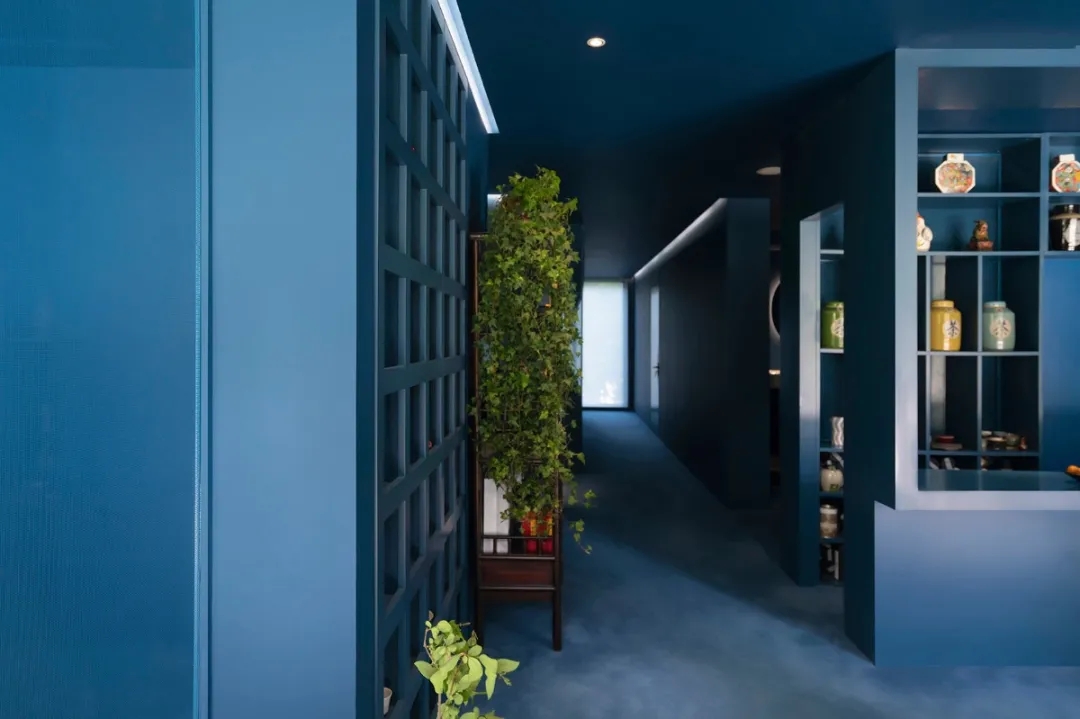
吧台内部增加了展示售卖的器物架,后来被强行增加的木质架子本不属于这个空间,空间实现也总有得失。
Inside the bar, it adds display racks in order to make sales. However, the wooden shelves that were added later don’t belong to this space in essence. To realize the space, there are always advantages and disadvantages.
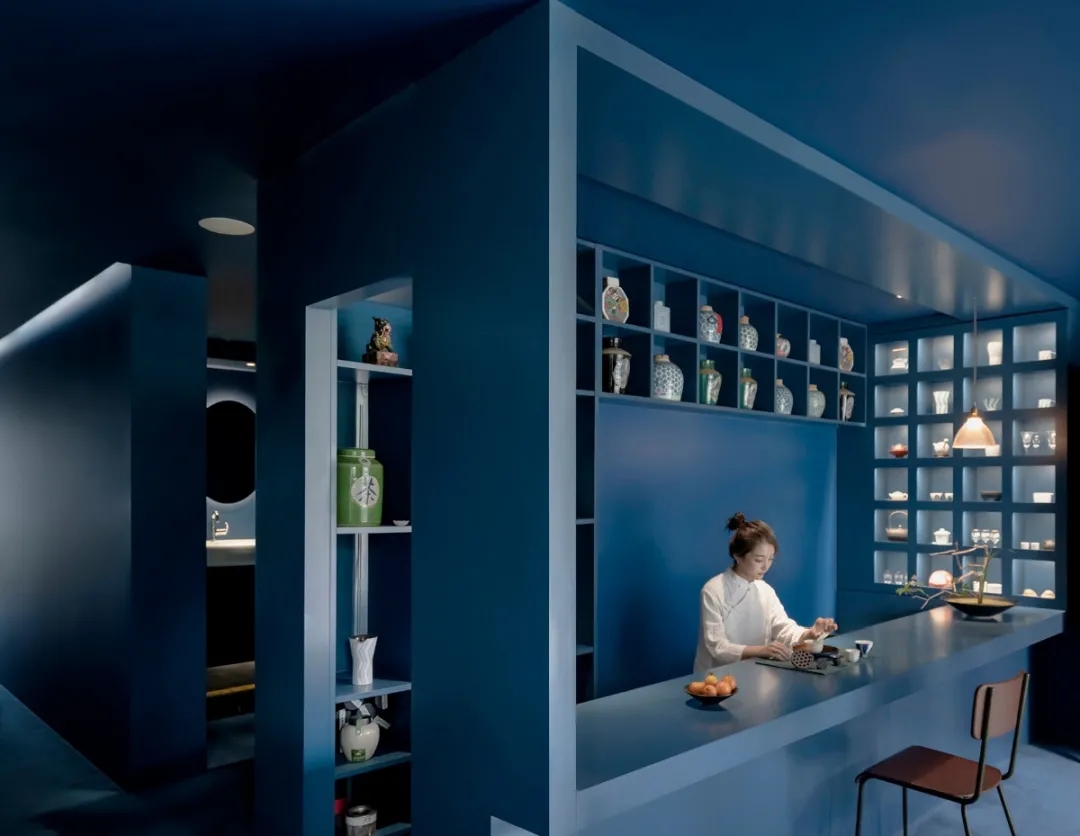
可提供茶饮服务的吧台。
Bar counter to provide drink service.
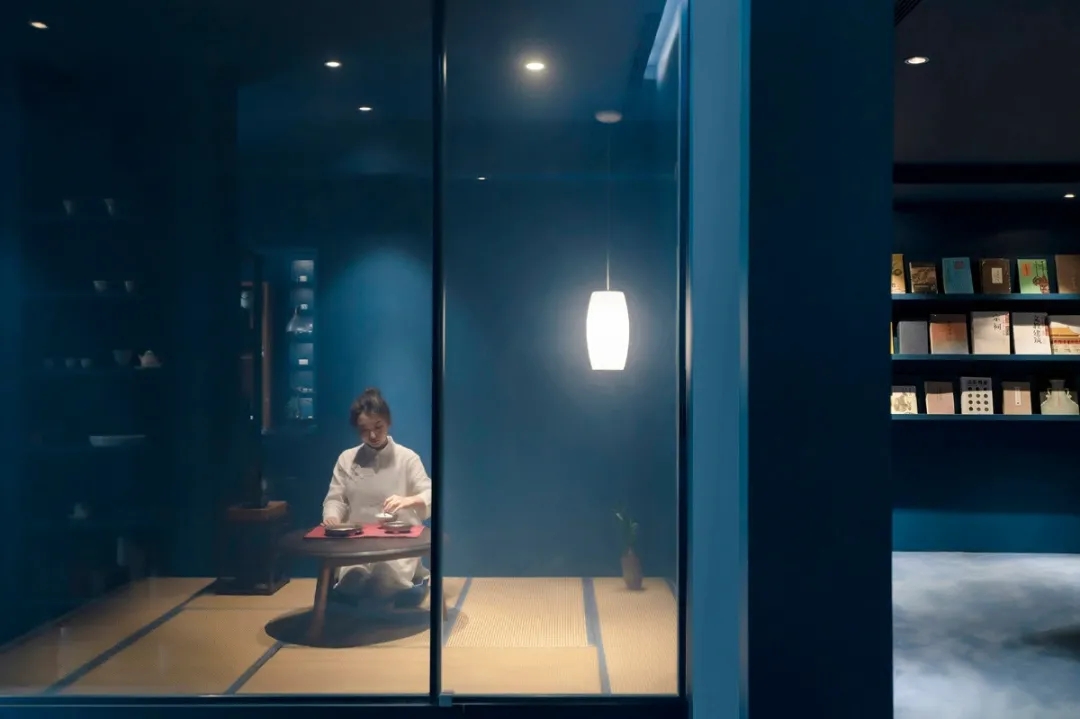
榻榻米小包间,隔壁是开放的阅读厅。
Tatami compartment next to the open reading hall.
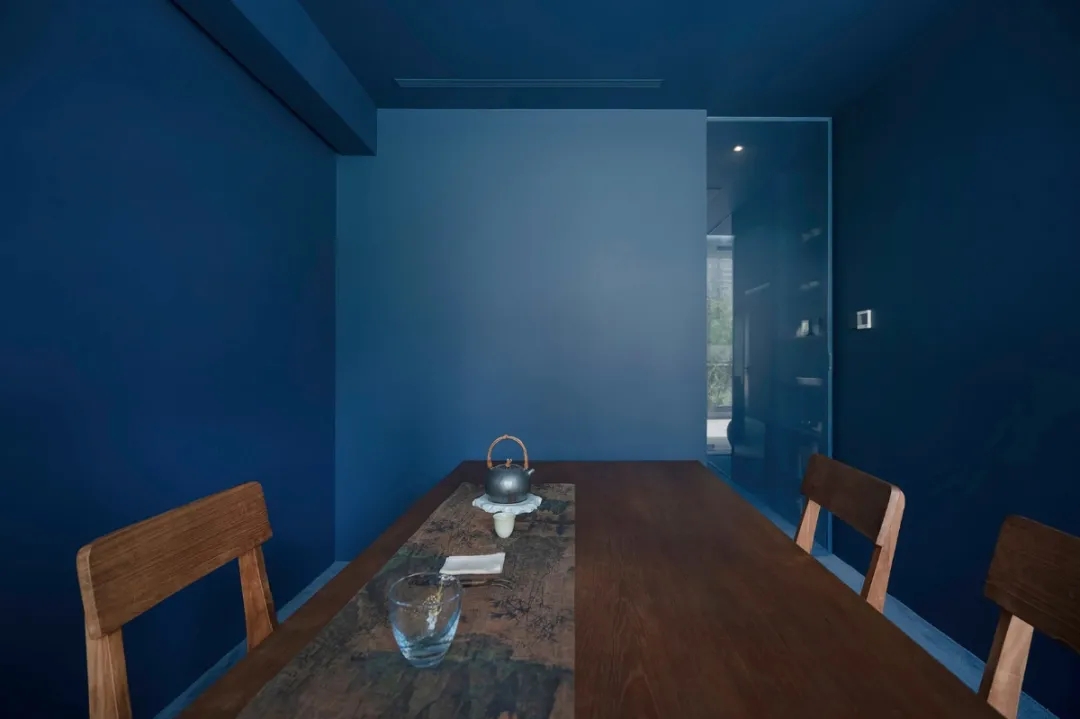
静谧的小包间,窄门倒映屋里屋外。
Bar counter to provide drink service.

阅读区 reading area
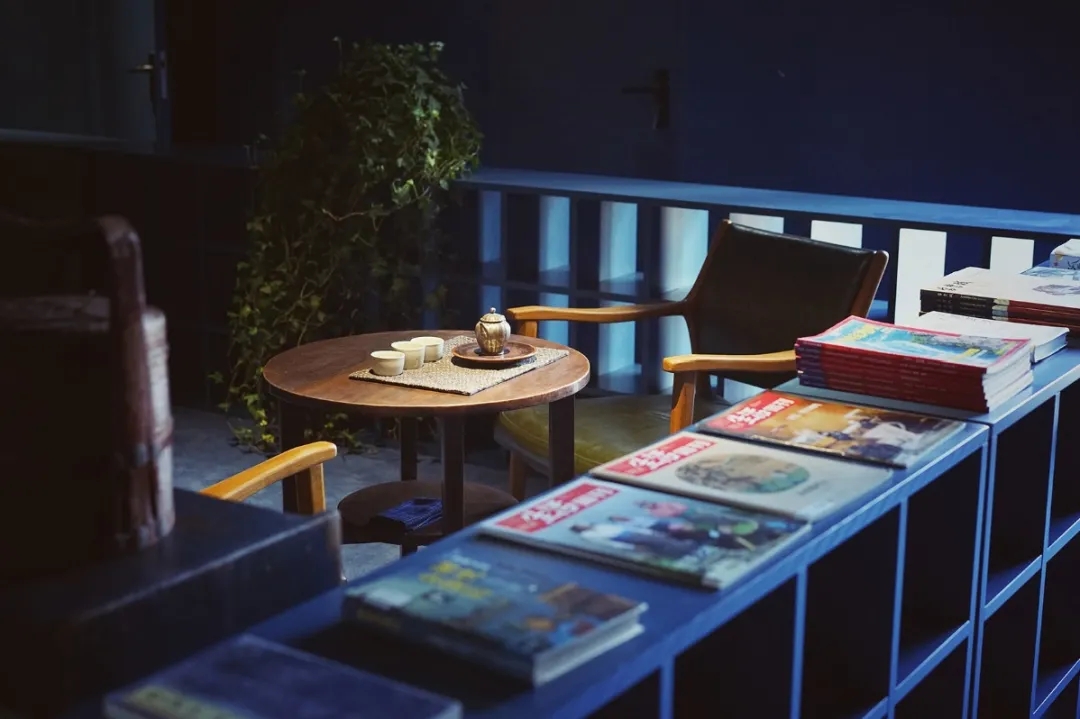
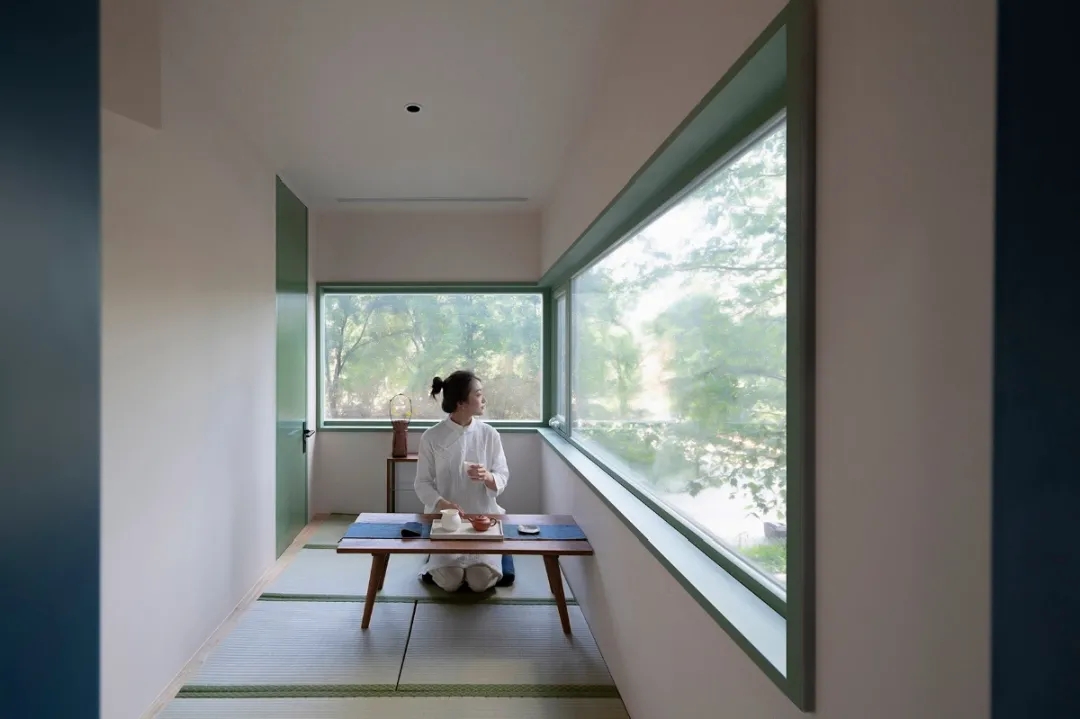
风景最好的榻榻米包间,屋外的风景被收入拉长的窗户。
Tatami private room with the best scenery, the outside scenery is drawn by the window
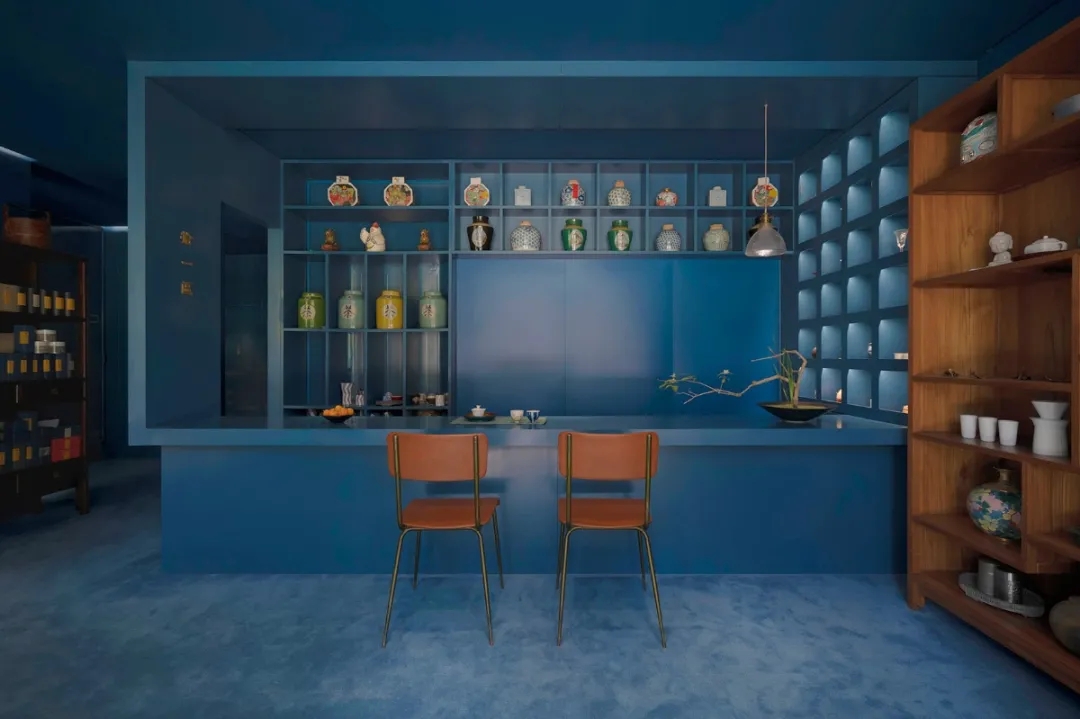
前台为散客提供茶饮,像酒吧一样的小吧台。喝茶是不是可以像饮酒一样,陌生人也能聊聊天。
The reception can provide tea and drinks for individual customers, like small bar counter in the bar. Can tea be like drinks, chat with strangers.

包间之间的狭窄过道,以及目之所及的器物架,服务着不同的功能空间。
The narrow passages between compartments and the visible racks provide services to different function spaces.

现状不可移动的墙体已经将空间的基本格局限制,同时由于种种原因卫生间和厨房以及两个小包间的位置也被确定。
The current immovable walls have limited the basic situation of the space. In the same time, the washroom, the kitchen and two small compartments have also been fixed due to various of reasons.
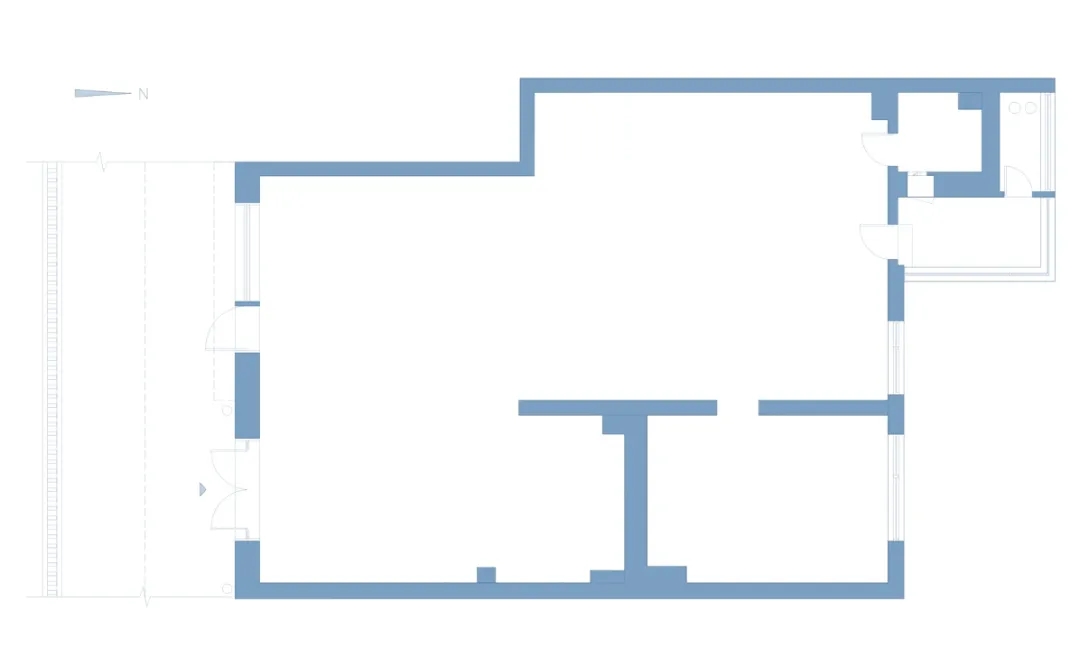
平面图 plan
“风车”的中心是一个“空”的核心,他指向的各个方向成为功能房间,其中包括:五个大小不一的包间、一个开放的阅读大厅、卫生间、厨房以及前台。
The centre of “wind mill” is an empty core which refers to the function rooms in all direction, including five compartments in different sizes, one open reading hall, washrooms, kitchen and the reception area.

立面1 cross-section 1

立面2 cross-section 2
项目名称:深海茶室-拾一區茶书房
Project name:Deep sea tearoom-Ten plus terrace
完成年份:2020.02
Completion Year: 2020.02
主创:米强强
Leader designer:Mi Qiangqiang
团队:张盛楠、陈俊龙、施魏
Team:Zhang Shengnan、Chen Junlong、Shi Wei
驻场设计:张盛楠
Stationary design:Zhang Shengnan
项目地址:北京·三元桥凤凰汇·里巷F303
Project location:Instreet F303,Sanyuanqiao Galleria, Beijing
建筑面积:150㎡
Gross Built Area:150㎡
摄影:周志鹏、墨美
Photo by:Zhou Zhipeng 、Mei Mo
客户:拾一區茶书房
Clients:Ten plus terrace
施工负责:缪家新、张彭飞
Construction manager:Jiaxin Miao、Pengfei Zhang
材料:地毯、金刚网、印花玻璃
Brand:Carpet 、 Metal mesh、Patterned glass
故事还在继续 ...
To Be Continue
全部评论